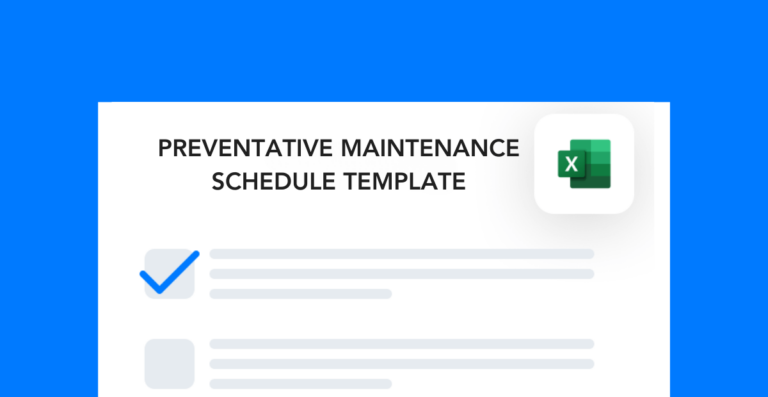After a few minutes on OSHA’s fatality reports database, the importance of equipment safety is undeniable. Heavy machinery can very easily cause severe injury or death. And if you don’t take care of your equipment, the likelihood of a safety incident increases.
Having an equipment maintenance scheduling system is essential for ensuring the safety of heavy machinery. It’s not enough to set an arbitrary date for the next tune-up. For success, you’ll need to implement an inspection process as well.
Free template!
Use this preventative maintenance schedule Excel template to get started.
Different ways to schedule maintenance
The equipment maintenance scheduling process doesn’t need to be complicated. In fact, the simpler your approach, the better.
The two main variables that you should account for are:
- Type of equipment
- Availability of technicians
If your site has many kinds of equipment, your schedule should reflect that diversity. If your site’s maintenance team is small, you’ll need to carefully plan out each upkeep project.
Let’s look at some of the different ways you might schedule maintenance activities to account for these variables.
Weekly maintenance schedule example
One way to plan maintenance is to have new tasks every week. This is a great option if you often deal with unexpected maintenance activities. That’s because it ensures you make progress on regular upkeep each week without overloading your team’s schedule.
Here’s an example of what a rolling maintenance schedule might look like for highly used equipment:
WEEK 1:
- Monday: Label printers (lines 1 and 2)
- Tuesday: Tape machines (lines 1 and 2)
- Wednesday: N/A
- Thursday: Label printers (lines 3 and 4)
- Friday: Tape machines (lines 3 and 4)
WEEK 2:
- Monday: OB dock flex conveyor
- Tuesday: IB dock flex conveyor
- Wednesday: N/A
- Thursday: Forklifts (1-3)
- Friday: Forklifts (4-6)
This setup ensures that the most-used equipment gets routine maintenance, which can extend its lifespan and prevent safety incidents. It also ensures that the facilities team is always working on upkeep projects, decreasing the costs associated with repairing or replacing equipment.
You can cater this kind of schedule to fit less-used pieces as well. To do that, you’ll just set the cadence for equipment that needs weekly upkeep and put other items on the calendar around those tasks.
If your team is in the habit of performing maintenance when it’s scheduled, it shouldn’t be a problem to book things out well in advance.
Inspection-dependent maintenance schedule
There will be many tools and machines that don’t need consistent maintenance. If you don’t have a lot of resources, it may be better to base your maintenance schedule on inspection results.
So, instead of scheduling upkeep projects routinely, you start by scheduling inspections first. Then, depending on the outcome of the inspections, you can schedule maintenance work that needs to be done.
This may save time if you have a small team and don’t have a lot of rough processes that test your equipment. If, however, your machinery wears out quickly or your team is flexible to complete consistent maintenance, the rolling schedule might be better.
Tracking equipment upkeep
When it comes to ensuring your equipment is ready and reliable on-demand, there’s nothing more important than regular maintenance. When left untouched, even a perfectly functioning machine can succumb to injury or breakdowns. If you want to prevent costly repairs, safety incidents, or significant downtime, regular maintenance is key.
But simply scheduling it isn’t enough. You need to have a system in place to both document and track your efforts. The best way to do this is to coordinate maintenance within a digital software system.
This makes it easy to assign tasks to technicians, view inspections, log maintenance activities, and more. If you want to take your scheduling process to the next level, consider switching from traditional spreadsheets to a more advanced tracking system.
Other posts you might like…
No posts


